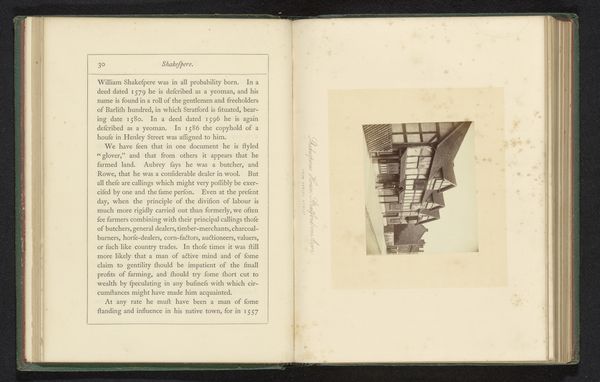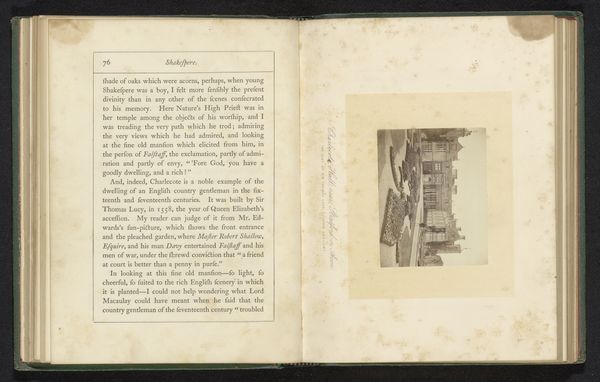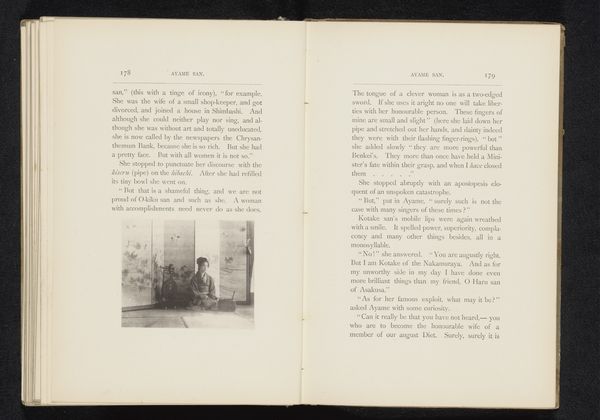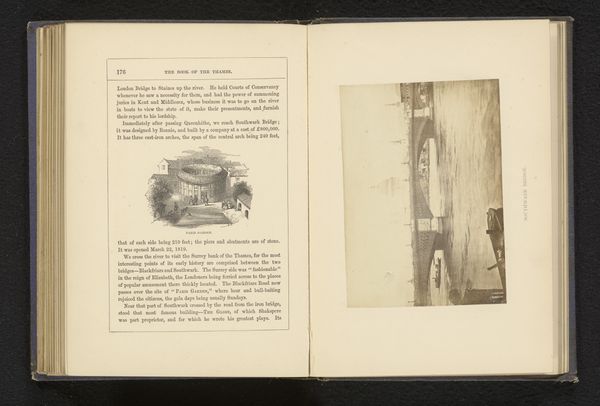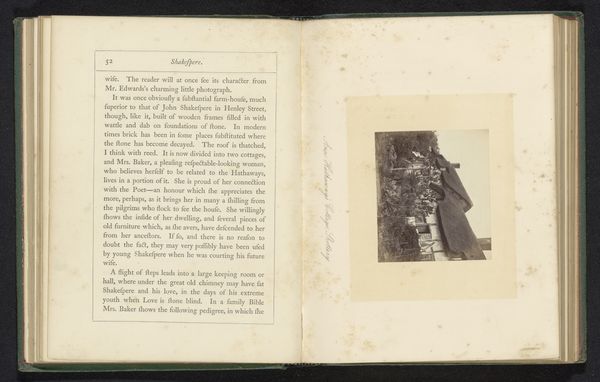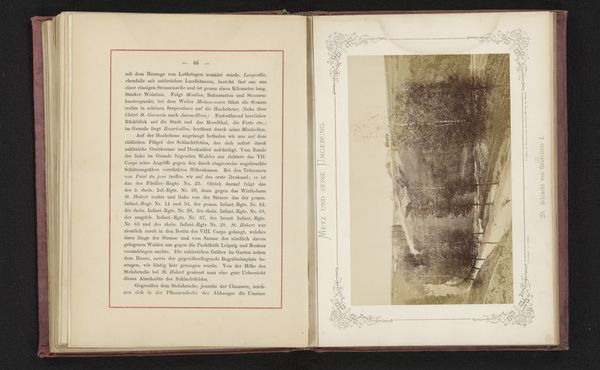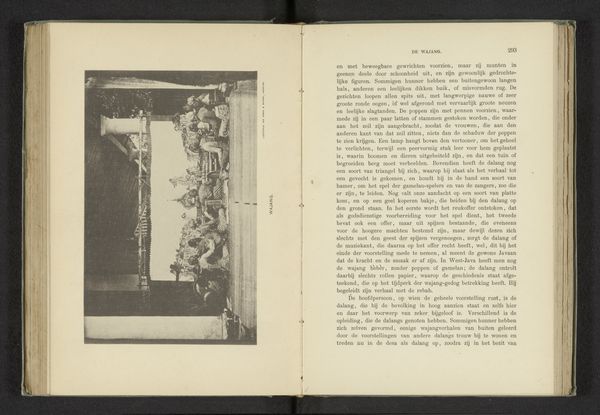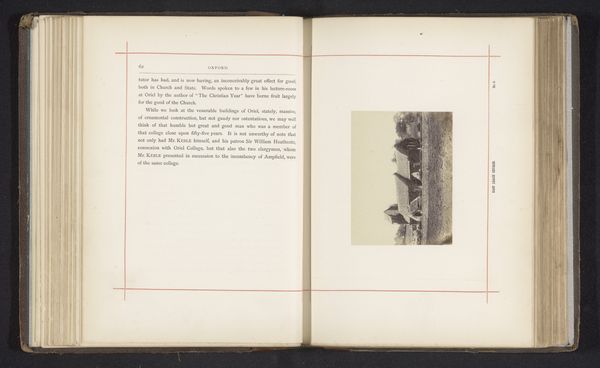
drawing, print, paper, photography, ink
#
portrait
#
drawing
# print
#
paper
#
photography
#
ink
#
coloured pencil
#
watercolor
Dimensions: height 79 mm, width 73 mm
Copyright: Rijks Museum: Open Domain
Editor: Here we have Ernest Edwards’ photographic print called "Room in which Shakespere was born," created before 1864. It's striking how small and… unassuming it looks, almost ghostly. What’s your take on this depiction of such a significant place? Curator: Ghostly is spot on! It has that Victorian fascination with mortality and memory all rolled into one. Edwards, like a literary medium himself, is trying to conjure the Bard's spirit. It's not just a room, it's a stage for the imagination. Editor: I see what you mean. It does feel staged, but strangely impersonal, like a crime scene almost? All that text on the left-hand page talks about pilgrims. Curator: Ah, but look closer! This isn’t just *any* room; it's supposedly where Shakespeare entered the world. Edwards is presenting a relic. And that textual accompaniment…that is what transforms the photo from documentation to veneration.. The slightly out-of-focus quality of the photograph actually amplifies that effect; a sort of visual haze of history and wonder. Editor: So, it’s not really about accurate documentation, but about the emotional impact of the site? Curator: Precisely! Think about how people treat historical landmarks – the scratches, the whispers, the sheer weight of expectation pressing down on the place. Edwards captured that essence beautifully; that almost desperate attempt to connect to greatness. Is it accurate? Does it matter? It sparks something. Editor: That really changes my perspective. It’s like Edwards isn’t showing us a room, but rather how a room can hold a nation’s imagination. Thanks, I never thought of photography doing something like this!
Comments
No comments
Be the first to comment and join the conversation on the ultimate creative platform.



